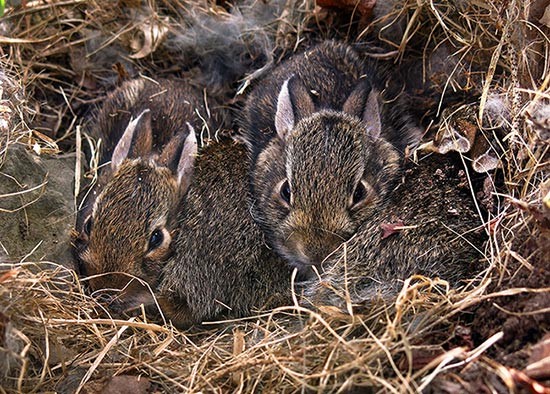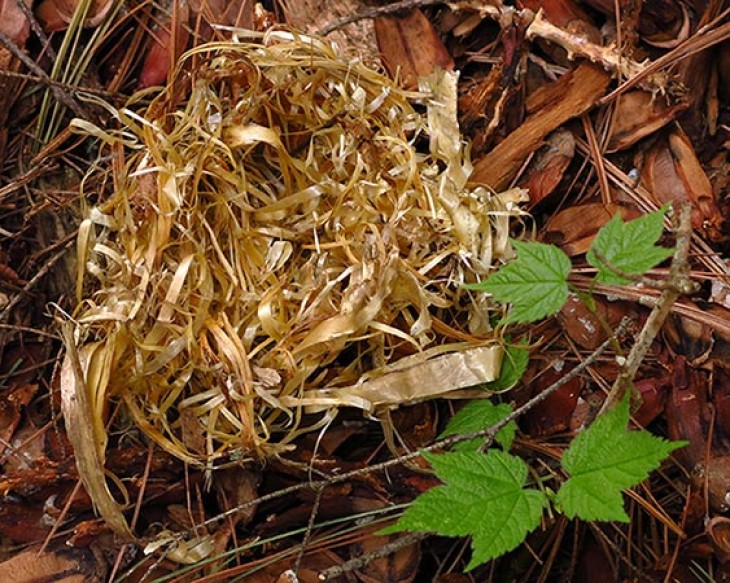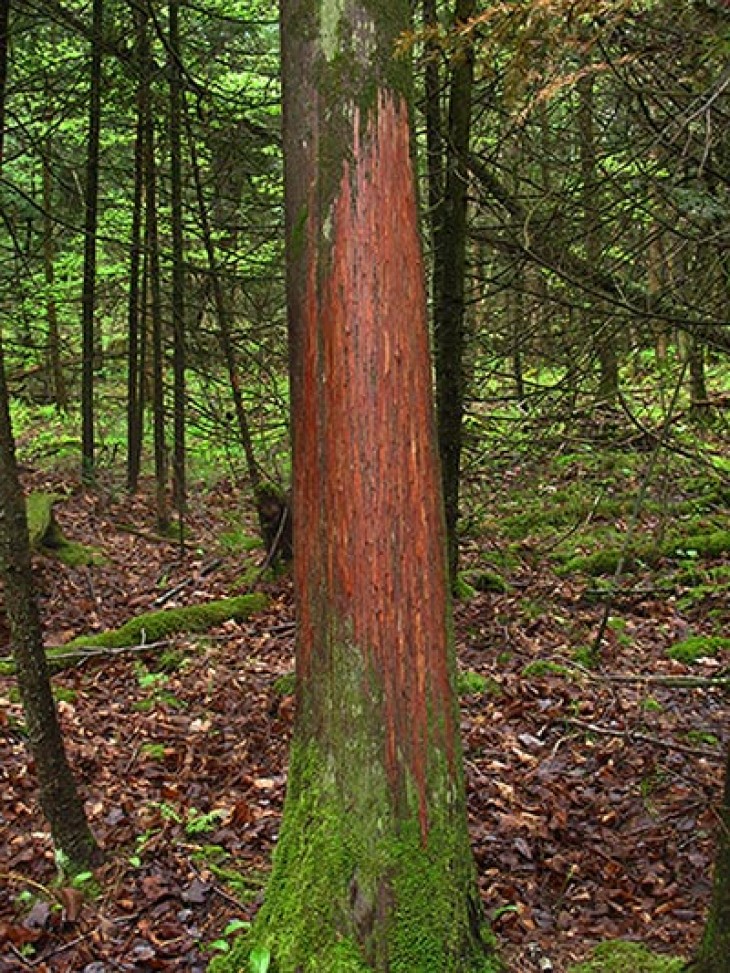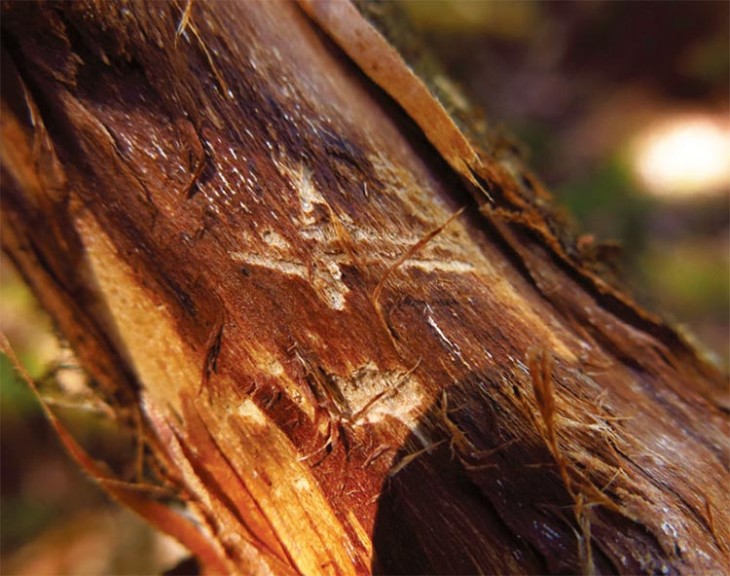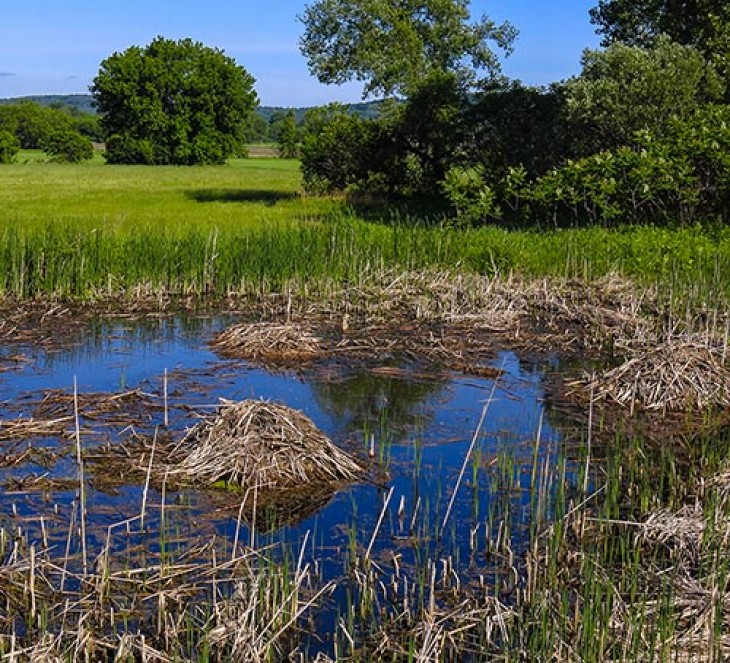By late May, we are cheered by the melodious songs of birds – birds which, at this time of year, are busy building nests, guarding them, and soon caring for their newborn occupants. But what about the other nests we see out there? Who builds them, and for what purpose? Tracks are not especially useful for learning about the animals that built these curious nests, but the careful examination of sign can provide us with some clues.
Red Squirrel (Tamiasciurus hudsonicus)
Red squirrels create their fibrous, globular nests on top of sturdy tree branches. They make sure, however, that the nest is located beneath protective layers of interwoven branches and foliage that provide shelter from avian predators and challenging weather. Upon close inspection, a red squirrel nest is a surprisingly compact arrangement of highly insulating woven and packed soft materials, including fine grass stems, pine needles, pieces of leaves, and the stripped bark fibers of grapevines and white and red cedar. Look for incisor scrapes on the surfaces of these species’ trunks and branches to see where squirrels have used their teeth to loosen and remove strips of bark. Dead aspen, basswood, elm, willow, and striped maple branches are also similarly bitten for their inner bark’s sturdy, thread-like strands. I once found a neat pile of yellow birch bark curls that a red squirrel had collected and cached alongside conifer cones – all provisions for the future. Damp leaves are deliberately packed on the nest floor and up the inner walls to fortify the structure. The safe, warm chamber within the nest may be 6 to 10 inches in diameter.
Eastern Cottontail (Sylvilagus floridanus)
Eastern cottontail nests may be found anywhere in farm fields, brushy thickets, forest edges, and even our suburban lawnscapes, where they are most often undetected. A mother cottontail scrapes out a shallow depression and encircles it with a protective wall of grass, leaves, and stems. Next, she lines the sides and floor with hair that she pulls from her breast and belly – providing more structure and warmth to the nest. Within the nest her infant young will huddle, utterly quiescent, and await their mother’s secretive twice daily visitations, during which time they will be groomed and fed. When mother leaves she will carefully conceal the nest and her babies beneath a covering of fine grasses, leaves, and other vegetation.
Muskrat (Ondatra zibethicus)
Unlike the familiar beaver lodges that are built of heavy woody materials, muskrat houses are constructed of lighter, finer plant materials, including small twigs and emergent plant parts such as cattail and phragmites leaves and stems. Rushes, grasses, and sedges are also used, often intermingled and cemented with muddy peat and mosses. Houses appear as elliptical, dome-shaped islands surrounded by two to three feet of shallow water. These shelters are accessed by two or three underwater entrances. They are sturdy, with walls up to a foot thick, and they enclose a chamber, or sometimes several chambers, which may be used by several muskrats. When the summer sun is baking hot, muskrats keep relatively cool in their houses. They are also able to endure winter’s most frigid conditions by huddling together within their well-insulated shelters. On several occasions in summer, I have been delighted to see Canada geese attending to their own nests that they have placed atop the muskrat’s domed abode.


